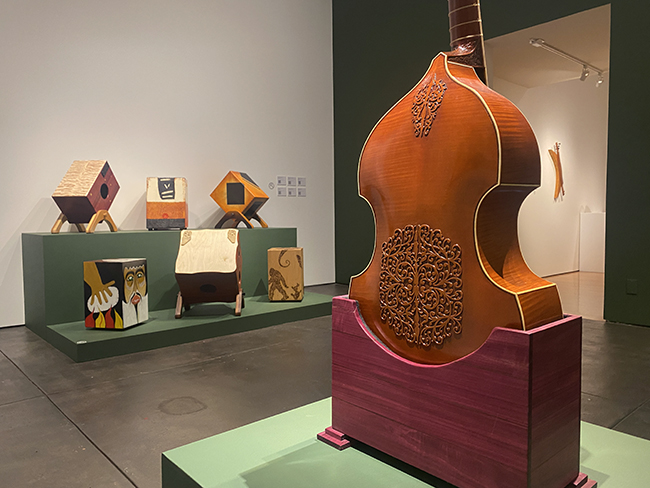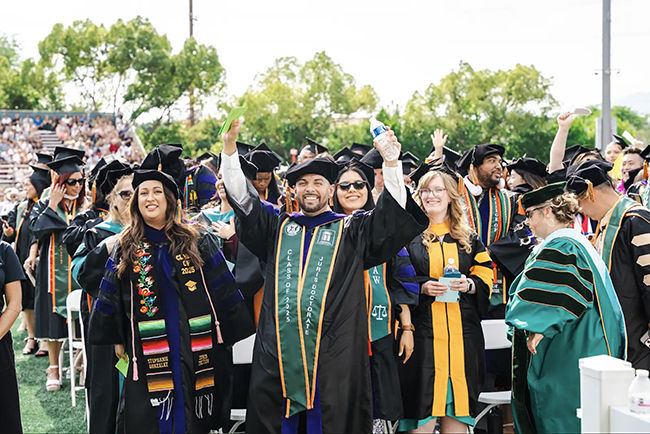College creep: Is it fact or fiction?
If you hang around certain circles in Claremont long enough, two words will eventually enter the conversation: college creep.
The term refers to what some residents claim is an encroachment of the Claremont Colleges into the surrounding town. The colleges buy properties, either converting them to student or faculty housing or bulldozing them in favor of more administrative centers.
At least that’s the fear shared by some people in the Claremont community. As it turns out, there are differing opinions all across the board on what kind of impact college-owned properties create in the City of Trees and PhDs.
Claremont Heritage Director David Shearer outlined what he thinks is a worrisome movement of the gown into the town.
“I think it is something that is happening, it is real and of course you can’t blame them for expanding,” he said. He noted a planning commission study that outlines the number of properties the Colleges own is into the hundreds.
According to the Los Angeles County Assessor’s Office, about 43 residential properties in the central part of the Village—that is to say, the area up to Foothill Boulevard in the north, Indian Hill Boulevard to the west, College Avenue to the east and Harrison Avenue to the south—belong to a Claremont College.
Factoring in the roughly 300 properties in the surrounding Village area, around seven percent of parcels in that area are college-owned.
Broken down by college, Claremont McKenna College owns the most residential properties—the vast majority of their 61 parcels are centered in the former Arbol Verde neighborhood of Brooks Avenue, Harwood Avenue and Blanchard Avenue. In that neighborhood, only 16 properties are not owned by CMC.
Pomona College comes in second with 18 residential properties owned, mostly in the Village. Scripps College owns 14 residential properties, Claremont Graduate University owns nine and Pitzer College owns one, according to the map.
Mr. Shearer noted that the Colleges buying up homes in the Village puts regular prospective homeowners at a disadvantage.
“When the Colleges buy a house, usually they use it for something,” he said. “It takes things off the market that would be available for the general public for someone who would want to move to Claremont.”
Karen Rosenthal, a former planning commissioner, city councilmember and mayor, concurred with Mr. Shearer’s assessment. She noted the essence of the Village would be changed if the Colleges continue to buy up property.
“It took a lot of work and a really deep though process in order to get it to a state as it is,” Ms. Rosenthal said of the Village. “It would be terrible for an institution to manipulate its way into land ownership and devastating to what is a huge resource.”
In an email to the COURIER, Claremont University Consortium spokeswoman Kim Lane refuted the concept of “college creep,” noting the term wrongly suggests a “tangible boundary” between the city and the Colleges.
“The reality is that by working in parallel and very often together, each entity has contributed to the formation of a vibrant, culturally rich and economically strong Claremont community,” Ms. Lane said.
Mr. Shearer and Ms. Rosenthal noted the conversation around the creep began in the 1980s, when the Colleges began buying houses for staff and faculty. But it wasn’t all just increased housing for Colleges employees—Mr. Shearer cited two controversial Pomona College projects, the Hahn Building and the ongoing Pomona College Museum of Art project, as further examples of creep.
In the early 90s, the Hahn Building, which was built behind Carnegie Hall on Harvard Avenue, generated controversy due to the land’s previous use of a bird watching sanctuary. A group calling themselves “Citizens to Save Our Village” was created to stop the project, but their lawsuit was dismissed in 1995.
As history often does, the process repeated itself this past year, when a group calling themselves “Citizens to Save College Avenue” filed a lawsuit trying to block the construction of the Pomona College Museum of Art and the moving of the Pomona-owned Renwick House to make room for the project.
A judge also dismissed that suit in February 2017, and the house was moved across the street as originally planned.
The CUC also owns the expansive and unused former Claremont Golf Course on Indian Hill Boulevard, which closed in 2013. Ms. Lane noted that the CUC is holding the land for future development purposes and “there are no set plans at this point” as to the future of the 31.5-acre course. In the meantime, residents can no longer use the historic city icon.
But the worry about what the Colleges might do to other properties in the Village hasn’t left. Mr. Shearer pointed out a small cluster of bungalows on the corner of Eighth Street and Yale Avenue, which was bought by Pomona College a few years ago.
“One tends to wonder at one point will they want to demolish those houses and build something or do something, expand kind of the reaches of the campus,” he said.
Ms. Lane refuted those concerns, noting that the bungalows, along with other houses in Arbol Verde, were renovated and are currently being used as staff housing, allowing them to live close to where they work.
“Just as importantly, it encourages them to become engaged members of the community. They shop and dine here, raise their families here and often even retire in Claremont,” Ms. Lane said.
“As we have done in the past, we will work closely with the city, keeping them informed and updated about issues related to the purchase or sale of property,” Ms. Lane added, noting the recent transfer of property in Evey Canyon from Pomona College to the city.
But it’s not all doom and gloom when it comes to college-owned properties. Claudia Pearce, a former publicist for Claremont School of Theology, noted she doesn’t believe in the concept of “college creep.”
“They’re not trying to grab more lands, they’re just trying to use more land for better purposes,” she said.
Ms. Pearce took issue with the term “college creep” itself, which denotes a negative relationship between the community and the colleges. That relationship should be more of a symbiotic nature, she said.
“Phrases like college creep seem like such a turn off. I hate to see a combative relationship,” she said. “[The Colleges are] bending over backwards to be good citizens.”
—Matthew Bramlett
news@claremont-courier.com
[Correction: a previous version of this article miscounted the number of residential properties Pitzer College owns. Pitzer owns one residential property, not 10. —MB]











0 Comments